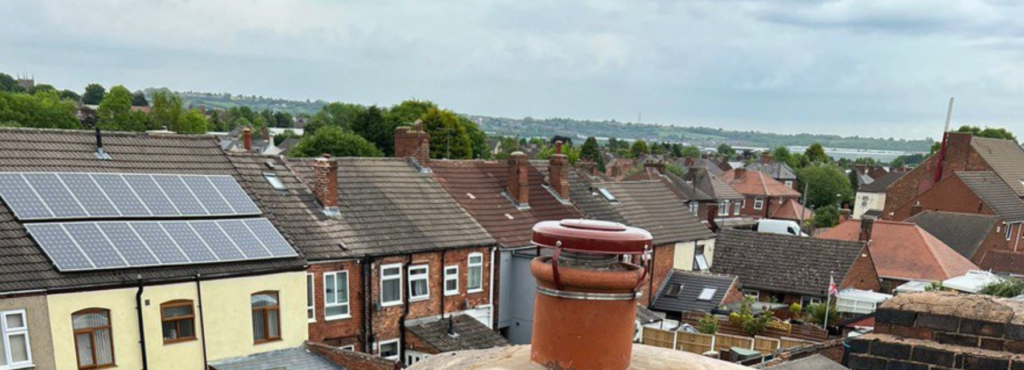Flat roofs are a popular choice for both residential and commercial properties, offering modern aesthetics and practicality. However, they are more prone to surface issues such as blistering and cracking, especially as they age or if not properly maintained. These defects might seem superficial at first, but they often signal deeper issues that require prompt attention. At Arundel Roofing Repairs, we’ve helped countless property owners in Arundel, Hampshire, identify and resolve these early warning signs before they escalate into major roofing problems.
Understanding Blistering and Cracking
Flat roofs are typically constructed using layers of felt, bitumen, or modern membranes. Over time, environmental stress, poor installation, or trapped moisture can cause visible imperfections to appear on the surface.
- Blistering occurs when pockets of air or moisture become trapped beneath the roofing membrane. When the sun heats the roof, the trapped air expands, creating raised, bubble-like sections.
- Cracking, on the other hand, results from the roof material becoming brittle, often due to prolonged UV exposure, age, or temperature fluctuations. These cracks allow water to penetrate, which can lead to leaks and structural damage.
Common Causes of Blistering on Flat Roofs
Blistering doesn’t happen overnight — it develops gradually due to a combination of factors. Some of the most common causes include:
- Trapped Moisture During Installation
If moisture is sealed beneath the roof layers during construction, it can later expand when exposed to heat, creating blisters. - Poor Adhesion Between Layers
Inadequate bonding between the roof deck and the waterproof membrane can leave gaps where air collects, especially on older felt roofs. - Excessive Heat and Sunlight
Flat roofs in direct sunlight experience repeated heating and cooling cycles. This thermal movement increases pressure beneath the surface, causing blisters to form. - Age and Material Deterioration
Older roofing materials naturally lose elasticity, becoming more vulnerable to expansion, separation, and bubbling.
Causes of Cracking and Surface Splits
Cracking is a sign that your flat roof has lost flexibility. Common reasons for this include:
- UV Degradation: Long-term exposure to sunlight weakens bitumen and other roofing materials.
- Thermal Movement: Constant expansion and contraction cause fatigue over time.
- Poor Installation: Thin or uneven application of roofing layers can lead to premature cracking.
- Neglected Maintenance: Debris and standing water accelerate deterioration, making materials more likely to split.
Why These Issues Shouldn’t Be Ignored
Blistering and cracking may seem like cosmetic concerns, but they can lead to significant roofing failures if left untreated. Here’s why:
- Water Ingress: Cracks and lifted blisters allow water to seep into the roof layers, leading to leaks.
- Loss of Structural Integrity: Persistent moisture weakens decking and insulation.
- Accelerated Decay: Once water enters, freeze-thaw cycles cause further expansion, worsening the damage.
- Reduced Lifespan: Neglected flat roofs deteriorate far quicker, resulting in more costly repairs later.
Professional roofers, such as the team at Arundel Roofing Repairs, use advanced inspection methods to identify whether the damage is surface-level or deeper within the membrane. Early intervention prevents more extensive – and expensive – issues in the future.
How Professionals Assess Blistering and Cracking
When inspecting a flat roof, experts typically check for:
- The size and pattern of blisters – small, isolated ones may be harmless, but large or connected blisters indicate trapped moisture.
- The depth and spread of cracks – deep cracks often signal ageing materials or underlying structural movement.
- Soft spots underfoot – a sign that water has penetrated and weakened the layers beneath.
- Condition of drainage systems – poor drainage contributes to ongoing moisture issues.
Once the cause is identified, repairs can be tailored to the specific problem, whether that means resealing seams, replacing sections, or applying a new protective coating.
Preventing Blistering and Cracking in the Future
Flat roofs can remain durable and watertight for many years if properly maintained. Preventative steps include:
- Scheduling annual inspections to detect early signs of deterioration.
- Clearing debris to avoid water pooling.
- Maintaining good drainage through regular gutter and outlet cleaning.
- Ensuring ventilation to reduce moisture build-up beneath the surface.
- Using professional contractors for installation and repair to guarantee correct adhesion and material quality.
At Arundel Roofing Repairs, our maintenance services focus on preserving the integrity of flat roofs, ensuring they perform efficiently through every season in Arundel and the wider Hampshire area.
Conclusion
Blistering and cracking on a flat roof are not just aesthetic flaws — they are early warnings of potential roof failure. Understanding their causes and addressing them promptly is essential for protecting your property from leaks and structural damage.
For property owners in Arundel and across Hampshire, Arundel Roofing Repairs provides expert flat roof inspections, maintenance, and repairs. By identifying problems early and using the correct restoration techniques, we help ensure your flat roof remains durable, watertight, and built to last.
Call us on: 01903 947 196
Click here to find out more about Arundel Roofing Repairs
Click here to complete our contact form and see how we can help with your roofing needs.

